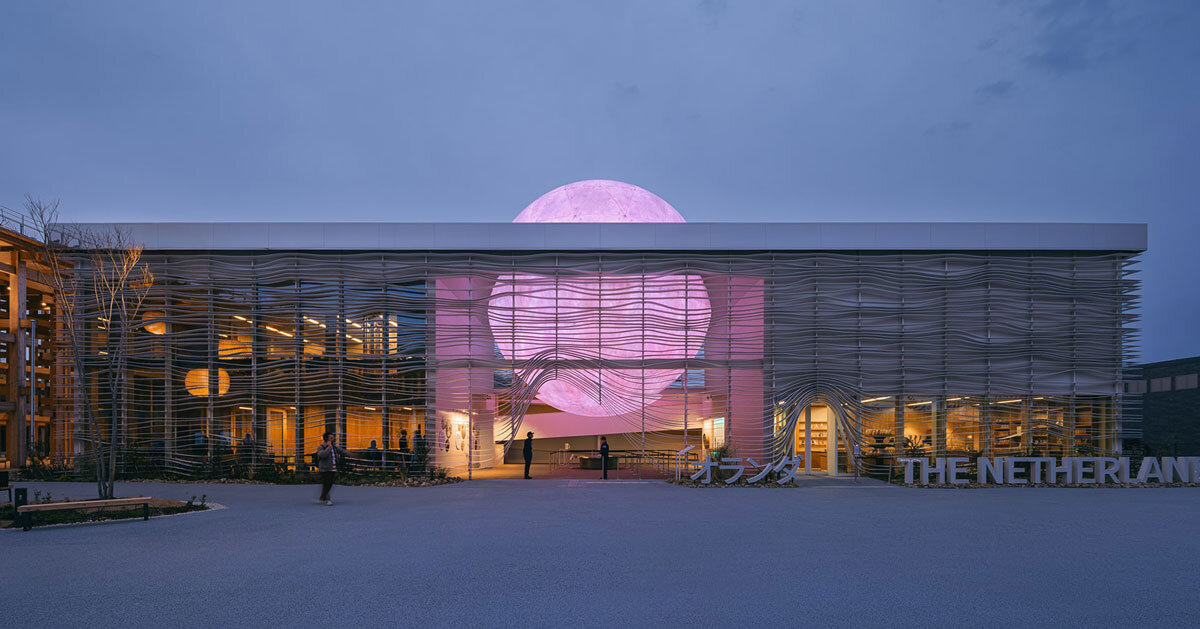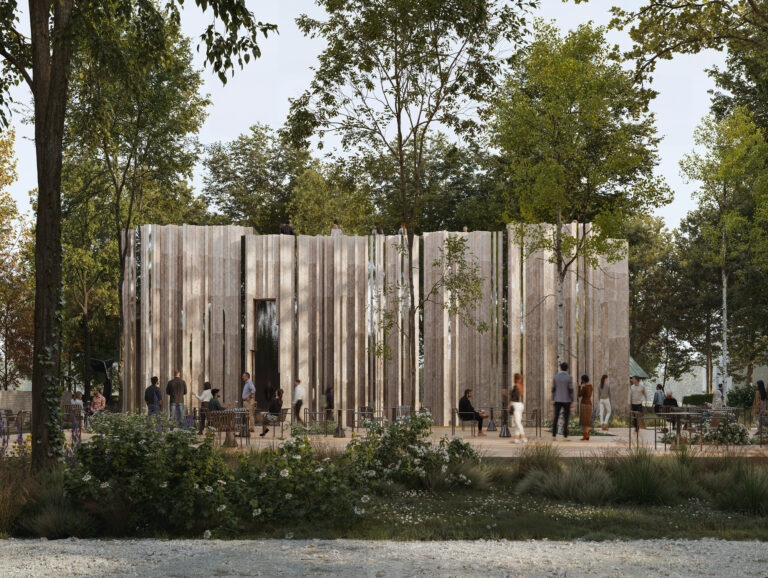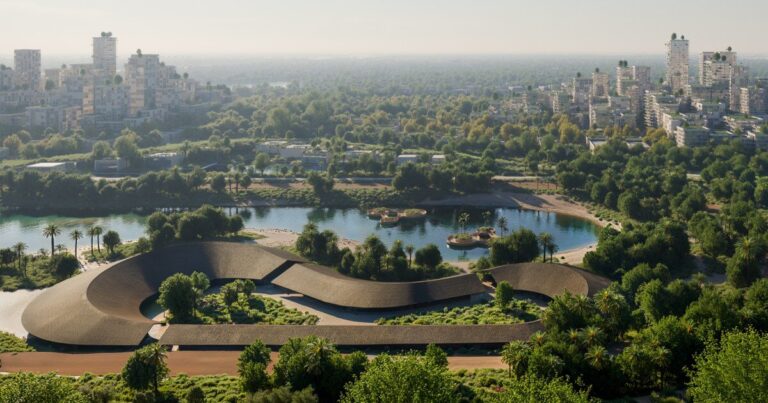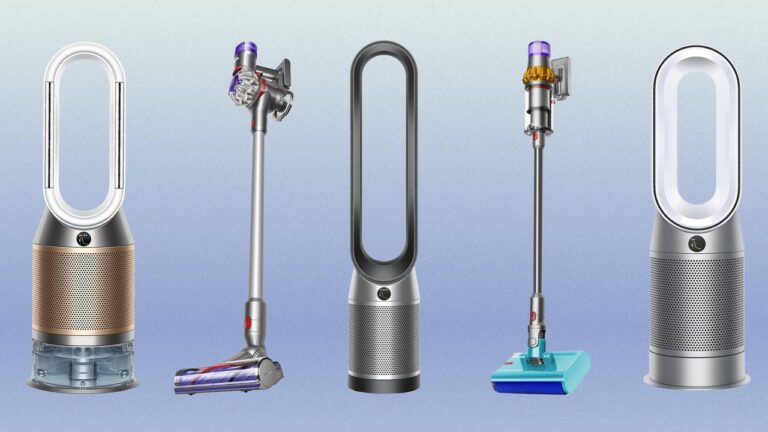luminous sphere emerges from layered netherlands pavilion at expo 2025 osaka
Common Ground: The Netherlands Pavilion at Expo 2025 Osaka
The Netherlands presents its pavilion, developed by RAU Architects, at Expo 2025 Osaka under the theme ‘Common Ground.’ Designed according to circular principles, the structure serves as a platform for knowledge exchange and international cooperation, with a focus on the energy transition and environmental sustainability. Over a six-month period, the pavilion is set to host programming aimed at facilitating collaboration between Dutch and Japanese organizations across business, research, and policy.
The pavilion’s theme draws on the Netherlands’ historical and spatial relationship with water. Large parts of the country lie below sea level, necessitating a long-standing tradition of collaboration in water management. The concept of ‘Common Ground’ extends this ethos to a global scale, emphasizing collective responsibility in addressing finite resources and planetary boundaries. The pavilion integrates principles of the circular economy, highlighting material reuse, adaptability, and systems thinking in the built environment.
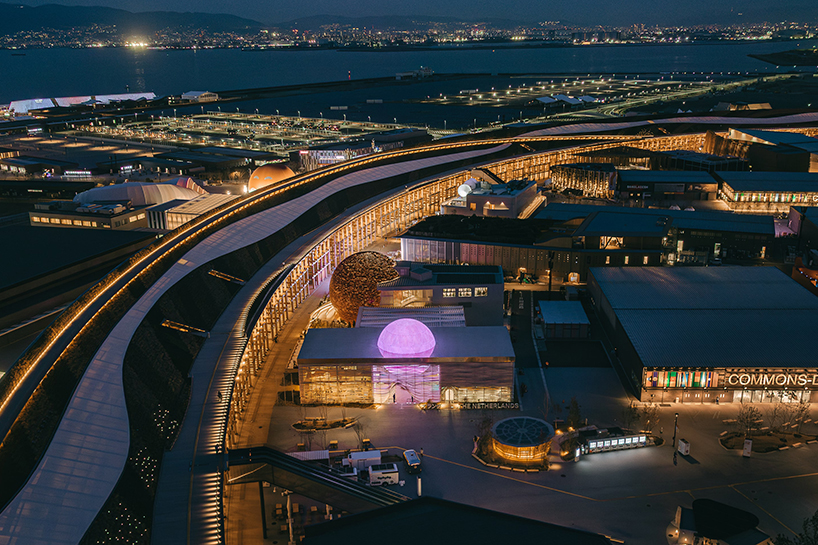
all images by Zhu Yumeng
undulating slats envelop central luminous ‘rising sun’
The structure is designed and constructed by AND BV, a Dutch-Japanese consortium that includes architecture firm RAU Architects, engineering consultancy DGMR, design studio Tellart, and Japanese construction company Asanuma Corporation. The pavilion takes the form of a rectangular volume, with a prominent central luminous sphere symbolizing renewable energy, specifically hydropower.
The facade features undulating slats designed to reference the motion of water. Their combined length totals 425 meters, referencing the 425-year-long relationship between the Netherlands and Japan. All materials used in the construction are cataloged in Madaster, a digital platform for material registration that supports circular construction by enabling reuse and transparency. The pavilion is designed for disassembly and relocation. After the Expo concludes, it will be dismantled and reconstructed in a different context, extending its lifecycle and preventing material waste.
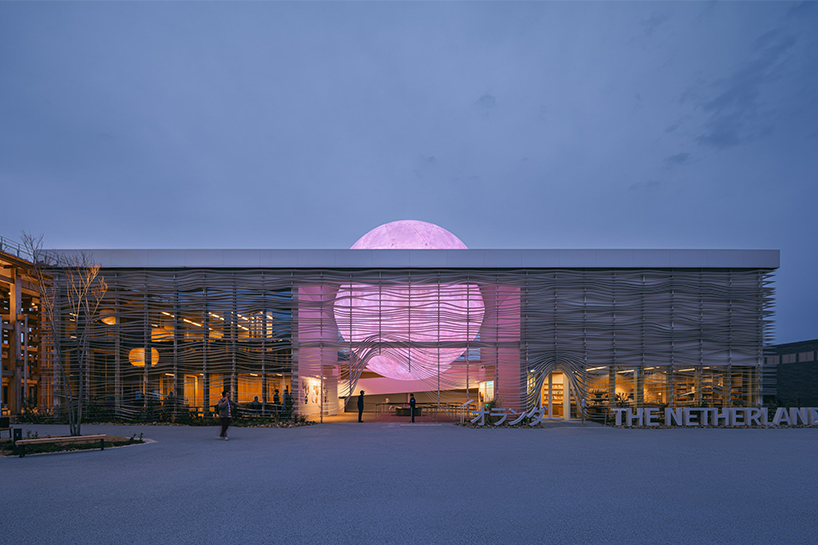
main facade evening
Netherlands pavilion’s form symbolizes circular design
Visitors enter the pavilion and receive a small, illuminated object that interacts with various installations throughout the interior. The exhibition content focuses on historical and contemporary collaborations between the Netherlands and Japan, with particular attention to climate adaptation and water management strategies. At the core of the pavilion is the glowing sphere, which functions as a projection space for a 360-degree AI-generated film. The experience concludes with an interactive installation inviting visitors to contribute reflections and aspirations related to shared global futures.
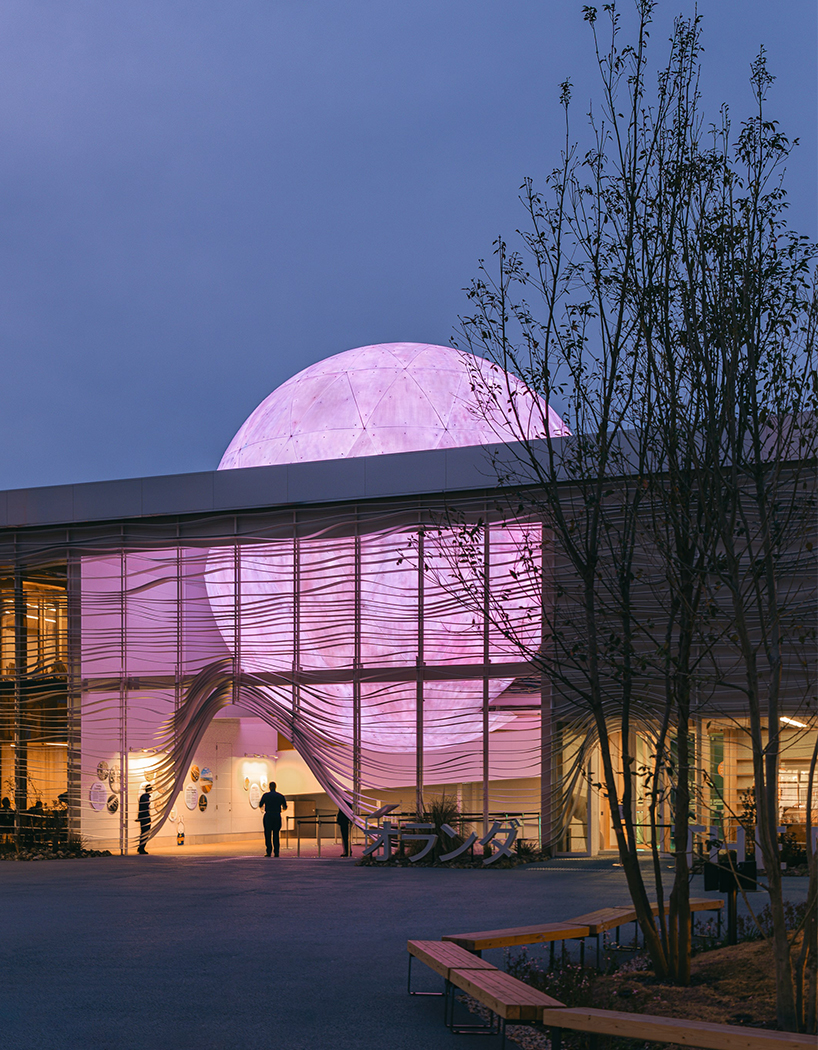
main entrance evening

